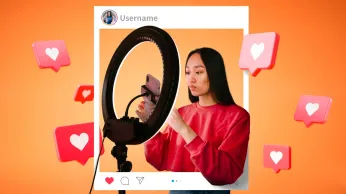On this page
Google is set to launch a new algorithm update in May that favors the page experience. You need to act quickly, improve your on-site experience, and rely less on organic search for growth.
This blog post focuses on how the new Google algorithm update may impact your business and the strategies you can use to make sure that you succeed.
Read six on-page SEO essentials every ecommerce brand should consider
What is the Google Algorithm?
The Google Algorithm is the way Google assesses the relevance, quality and usability of a webpage. It’s a number of algorithms that work together in a complex system.
Essentially, Google wants to promote content that demonstrates a high level of Expertise, Authoritativeness, and Trustworthiness. This is called the “E-A-T” method. When your page has these qualities it is more likely to be found and ranked highly when someone enters a relevant search query in Google.
What’s the new 2021 Google Algorithm update?
Google announced in November 2020 that in May 2021 they will launch their new Algorithm update. The update will be primarily concerned with improving the page experience by favoring high-performing websites with strong UX.
To accomplish this Google will be looking at three vitals: Loading, Interactivity, and Visual stability.
These vitals are measured through Google’s three new metrics:
1. Largest contentful paint (LCP)
It is Google’s page loading metric. It measures the number of milliseconds it takes for the largest content block on the page to load which triggers the page to appear fully loaded to the user
2. First input delay (FID)
It is Google’s page interactivity metric. This metric measures how long it takes for users to be able to interact with a page by clicking buttons on that page
3. Cumulative layout shift (CLS)
It is Google’s page stability metric. It measures how long it takes for all parts of the page to be completely loaded so that when a user clicks anywhere on the page there are no unexpected elements moving around from one rendered frame to the next.
How the page experience update will influence ecommerce rankings
SEO is extremely important for your ecommerce brand. 39% of global ecommerce traffic comes from search. It is important for your brand to capitalize on this because organic search brings qualified traffic in without being too costly. It’s also vital for brand discoverability and acquisition.
This new Google algorithm update encourages you to think outside the box and come up with innovative solutions. It’s not just about a generic SEO approach. UX will now be a more significant component in deciding how high you rank.
If two sites answer a search query, the one that has a bad or slow UX will be displayed second. This will result in a drop in traffic and acquisition.
But, because the impact of the algorithm is relatively transparent you can be proactive now and ensure that you achieve optimal ecommerce rankings.
What you need to do to react to the 2021 Google Algorithm update
There are two things an ecommerce merchant needs to do to react to the Google search algorithm update:
1. Stop being too reliant on SEO to generate sales.
Focus on serving your existing customers with a high-quality and well-maintained ecommerce experience
We’ll now talk about these key factors in more detail so you can make sure you are reacting to the changes as best as possible.
2. Focus on the page experience
You should begin by identifying areas on the site that need to be improved. This can be achieved by running a site audit.
Do Google’s online mobile-friendly test and look at page speed insights to see where your site needs to improve.
Take a wide view as well as a close one. Bring all stakeholders within your organization together to discuss how the update will be handled (including your SEO team, UX team, IT teams). If you work with an agency they should be able to help here too.
Once completed, take a deep dive into the following key areas the Google algorithm update will favor.
📱 Mobile search:
In Q3 of 2020, mobile devices generated 50.81% of global website traffic. Make your site mobile-ready by reducing code, leveraging browser caching, and reducing redirects. Web page design should be simple and responsive so it looks impressive on smaller screens too.
⚡️ Page speeds:
A delay of one second loading time can reduce conversion rates by 70%. There isn’t much room for patience online so optimize HTTP requests. Also, check on caching and image file sizes too.
📣 CTA optimization:
Make CTA action buttons and pop-ups an organic part of the customer journey. Ensure they provide value and show the customer what they will get out of the interaction.
Never Fully Dressed shows customers they’ll get 10% off their first order and enrollment into their loyalty program for sharing their contact details. Their CTA action is clear but not abrasive and offers customers immediate incentives.
3. Focus on the customers you already have
Google’s Algorithm update, along with changes to third-party data sharing, may make it harder for new customers to find your brand. You’ll become one among many and will be stuck competing for your customers’ attention.
Instead, focus on the customers who already know and love you and encourage them to return, make repeat purchases, and long-term contributions to your bottom line.
There is tremendous value in solidifying your existing customer base. For example, 53% of customers who make a second purchase go on to make a third and 80% of your sales come from the top 20% of your customers. The value of loyalty should not be underestimated.
Here are some ways to focus on bringing existing customers back and reduce reliance on discoverability through SEO.
4. Kick-off a re-engagement campaign:
Check out your data and look at the customers who haven’t shopped from you again within a particular time frame. Reach back out to them to remind them that you’re there and bring them back to your store and start re-engaging.
Boody sends reminders to their loyalty program members telling them their points are about to expire and that they could miss out on discounts if they don’t return. This “Points expiring soon!” reminder is simple without being invasive. It gives existing customers a gentle nudge in the right direction.
5. Connect with your existing customers emotionally:
When your existing customers find a brand through a Google search, there is most likely a lack of emotional loyalty and connection.
But, if they’ve shopped with you once, they already trust your product and store experience. It pays to leverage the emotional connection with your customer too. Satisfied shoppers spent an average of $275 a year at apparel stores between 2016 and 2018, compared to $699 for emotionally connected shoppers. Make the most of your bond.
Keep building this trust and differentiating from the market by showing customers how you’re emotionally aligned.
Zorali uses its loyalty program to allow customers to support their green initiatives and plant trees. It is an environmental initiative that enables customers to feel a sense of accomplishment when they engage with the brand. It is a clever way of creating a connection and nurturing their loyalty to you.
6. Adapting to the update
The full impact of the update is yet to be seen. In time we’ll see how the new algorithm changed the landscape and forced ecommerce companies to adapt. What is clear is that ecommerce retailers must do what they can now to be reactive.
Conclusion
Focusing on the page experience and the customers you already have are the two key areas that will mean you take a proactive approach to adapt to the 2021 Google algorithm update. To succeed and take advantage of the update you must create a dependable connection with customers and build loyalty.
Connect with a Loyalty Analyst or check out our partner portal for agencies and advice that will help you respond to the 2021 Google Algorithm update.









